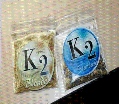- Home
- Login
- About Us
-
Services
- Drug Testing
- On Site Medical Services
- Background Screens
- Safety Training and Consulting
- Reasonable Suspicion Training
- Employee Assistance Programs (EAPs)
- Secure Internet Database
- Experience
- News & Events
- Contact Us
Newsletter Volume 1 Issue 1
|
||||||||||||||||||||||||||||||||||||||||||
|
||||||||||||||||||||||||||||||||||||||||||
| ||||||||||||||||||||||||||||||||||||||||||
"Providing Vital Services for a Safe Workplace Since 1991"




 herbal
incense, has been gaining a lot of media attention for its usage as a
drug. K2 has been labeled as "Fake Weed" due to its marijuana like
effects when smoked. Matt Sczesny, with St. Louis News Channel 4,
reported that many middle-aged adults in St. Louis had stocked up on K2
before it became illegal on August 28, 2010. Currently, K2 cannot be
detected by the laboratory in drug tests, which may be a major reason
for its growth in popularity. There have been very few studies on K2
usage as a drug. The following article from LiveScience, "Fake Weed,
Real Drug: K2 Causing Hallucinations in Teens" describes the increase in
K2 usage among teens, the adverse effects, and the dangers of using the
drug.
herbal
incense, has been gaining a lot of media attention for its usage as a
drug. K2 has been labeled as "Fake Weed" due to its marijuana like
effects when smoked. Matt Sczesny, with St. Louis News Channel 4,
reported that many middle-aged adults in St. Louis had stocked up on K2
before it became illegal on August 28, 2010. Currently, K2 cannot be
detected by the laboratory in drug tests, which may be a major reason
for its growth in popularity. There have been very few studies on K2
usage as a drug. The following article from LiveScience, "Fake Weed,
Real Drug: K2 Causing Hallucinations in Teens" describes the increase in
K2 usage among teens, the adverse effects, and the dangers of using the
drug.